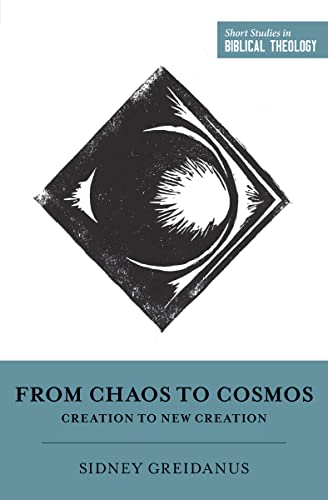A Brief Book Summary from Books At a Glance
by Kirsten Birkett
About the Author
Sidney Greidanus (born 1935) is an American pastor and biblical scholar. He studied at Calvin College and Calvin Theological Seminary before obtaining a Th.D. from the Free University in Amsterdam. He served as pastor in the Christian Reformed Church and taught at Calvin College and The King’s College before becoming professor of preaching at Calvin Theological Seminary in 1990. Greidanus is best known for his emphasis on preaching Christ from Old Testament texts.
Contents
- The Chaos–Cosmos Theme in Genesis, Exodus, and Joshua
- The Chaos–Cosmos Theme in Wisdom, Psalms, and Prophets
- The Chaos–Cosmos Theme in the New Testament
- Preaching or Teaching a Series on the Chaos–Cosmos Theme
General Summary
A biblical theology of the Bible based on the chaos-cosmos theme; how God turns chaos into cosmos by speaking and saving. The text is in an accessible style with reflection questions at the end of each section; scholarly details and references are in footnotes.
Chapter 1: The Chaos-Cosmos Theme in Genesis, Exodus and Joshua
The chaos–cosmos theme falls under the theme of God’s kingship and God’s coming kingdom, a subset of the storyline of creation, fall, redemption, new creation. “Chaos” is a commonly used term for a variety of biblical phrases such as “without form,” “void” and so on. “Cosmos” refers to the ordered, harmonious universe. The Bible begins with the creation of this orderly cosmos (Gen 1:1) and finishes with a new one (Rev 21:1), with prefiguring units of chaos restored to order in between.
In the Ancient Near Eastern world, chaos was associated with the sea. The common worldview held to an earth surmounted by a domed firmament of heaven, with waters above and below. In Babylonian myth, Marduk created heaven and earth when he fought the ocean goddess Tiamat. In Canaanite literature, a storm god (Baal) battled a sea god (Yam). The Hebrew account used similar imagery to set up a very different view: God is utterly transcendent, acting in history, and does not need to ‘battle’ chaos but is sovereign over it.
In Genesis, God created heaven and earth, and it is described as chaos: without form, void, with darkness, the deep, and waters. Two more references to chaos in chapter 1 are seas in v. 10, and sea creatures in v. 21. However, these were not evil, but good. God’s spirit was to be sent out, as by speaking, he turned chaos into cosmos. Creation was ordered and filled. In chapter 2, Eden was the beautiful, life-giving, orderly cosmos. This order was broken in the fall. Humans, the land, and the animal world would henceforth be under God’s curse. Instead of living in the cosmos of Eden, humans would now live in a world of evil chaos. We continue to live in it. The new heaven and earth of Revelation will reverse this; and even in the current world, God showed his grace by retaining some order. . . .
[To continue reading this summary, please see below....]The remainder of this article is premium content. Become a member to continue reading.
Already have an account? Sign In
